Hey there, fellow axe-wielders! Ever picked up a guitar and wondered what magic lies within that sleek neck? No, we’re not talking about secret spells or ancient rock ‘n’ roll curses. We’re diving into the world of guitar neck wood types, a topic that might sound as dry as a desert, but trust me; you want to become familiar with this stuff!
Why care about wood, you ask? Well, you wouldn’t want the wrong wood for your guitar neck. It’s all about the sound, feel, and, let’s face it, looking cool on stage.
You can use the table of contents below to take you to the area that interests you. Click on the little box to open it, and then click on the section of the article you want to read, or you can read from start to finish if you want the full guitar neck wood experience!
The Short Answer
Choosing the right guitar neck wood types is essential for achieving the desired sound and feel of your guitar. From the neck to the fretboard, the selection of wood influences everything from tone to playability. Whether you prefer the bright clarity of Maple or the rich warmth of Rosewood, understanding the properties of these woods will guide you to the perfect guitar.
Keep On Reading (Below) To Learn More
The Anatomy Of A Guitar Neck
Understanding The Neck
The guitar neck serves a critical function in the overall structure and playability of the instrument. Acting as the guitar’s spine, the neck holds the strings in place and provides stability.
A well-constructed neck ensures proper string alignment and allows for comfortable playing. Conversely, a poorly made neck can negatively impact both the sound and feel of the guitar.
Materials Matter
The choice of wood in a guitar neck is not merely an aesthetic decision; it has a significant impact on the instrument’s tonal characteristics. Common woods like Maple, Rosewood, and Mahogany are popular for their unique sound qualities.
Maple often produces a bright and clear tone, while Rosewood is known for its warm and rich sound. Mahogany offers a softer, fuller tone. Selecting the right wood type for the neck and fretboard is essential for achieving the desired sound and playability.
Understanding the role and materials of the guitar neck is vital for both beginners and experienced players. The right combination of design and wood type can enhance the playing experience, providing the perfect balance of comfort, appearance, and sound.
Wood Types For The Neck And Fretboard
Neck Wood Types
The choice of wood for the guitar neck plays a crucial role in the instrument’s overall feel and sound. Here’s a look at some common neck wood types.
Maple
Maple is one of the most commonly used woods for guitar necks. Its bright and clear tone, combined with its durability, makes it a favorite among many guitar manufacturers. Fender uses it for their Stratocaster, Telecaster, Jazzmaster, and Jaguar. The wood’s natural appearance also adds a visually appealing touch. Maple is a popular choice for guitar necks.

Mahogany
Mahogany is commonly used in combination with Mahogany bodies to give a soft and full tone. It is often used in combination with other woods to create a balanced sound. Mahogany provides good sustain and a warm sound that complements various music styles. Guitars like the Gibson Les Paul, Gibson SG, and the PRS Custom 24 feature Mahogany necks.
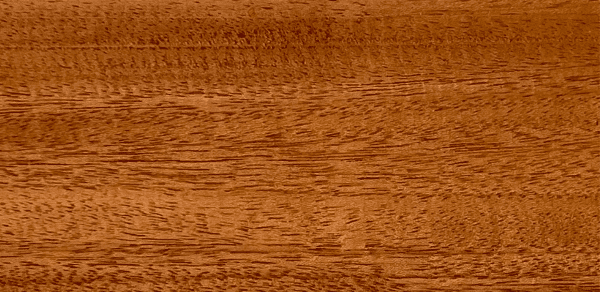
Roasted Maple
A newer option, Roasted Maple is treated to enhance stability and resistance to humidity changes. It’s an attractive choice for those seeking a modern touch.
This process gives the wood a unique appearance and enhances its natural characteristics. Guitars like the Ibanez Prestige AZ2402 utilize Roasted Maple for its neck, offering players a modern and reliable option.
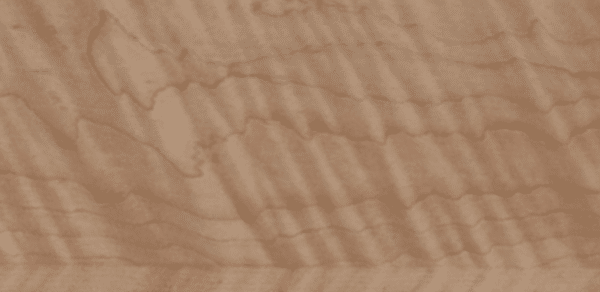
Fretboard Wood Types
The fretboard, or fingerboard, is another essential part of the guitar that benefits from careful wood selection. Here’s an overview of common fretboard wood types.
Rosewood
Favored for its warm and rich tone, Rosewood is a common choice for fretboards. Its natural oils provide a smooth playing surface.
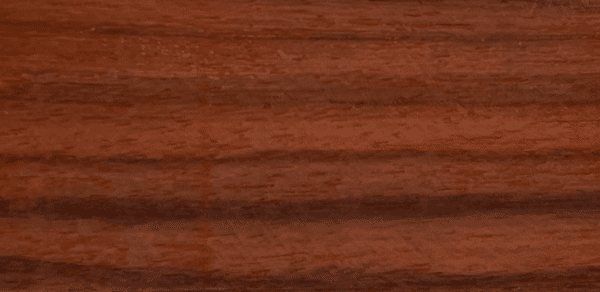
Ebony
Known for its crisp and articulate sound, Ebony is a dense wood that offers a sleek appearance and a smooth feel.
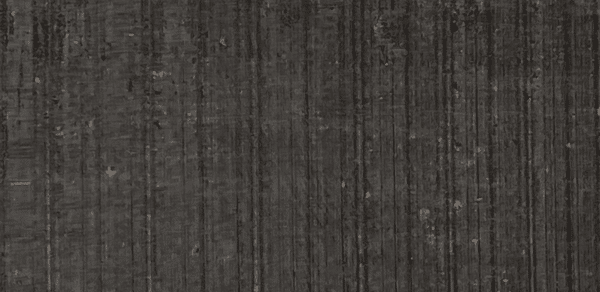
Maple
Sometimes used for fretboards as well, Maple provides a bright response and a clean look. Some guitar necks and fretboards are made from a single-piece maple instead of using a “maple cap” for the fretboard.
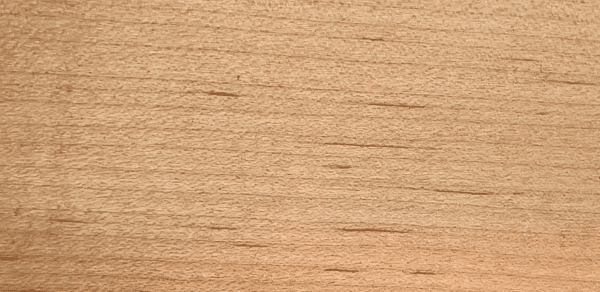
Other Notable Woods
While Maple, Mahogany, Ebony, and Roasted Maple are common choices, other woods like Pau Ferro, Walnut, Wenge, Koa, and Bubinga are also used in guitar neck construction.
Each of these woods offers distinct tonal properties and aesthetic appeal. Custom and boutique guitar builders often experiment with these and other exotic woods to create unique instruments.
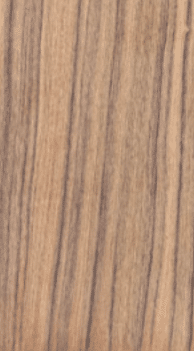
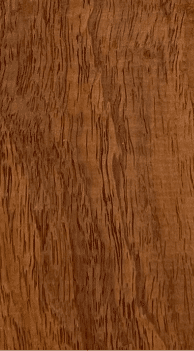
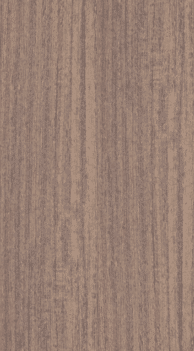
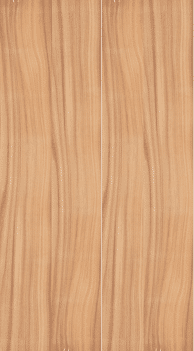

The Art Of Combining Neck And Fretboard
Combining different wood types for the neck and fretboard can create a harmonious blend of tones. For example, a Maple neck with a Rosewood fretboard often results in a balanced sound that combines brightness with warmth. Understanding the characteristics of these woods allows players to customize their instruments to suit their playing style and musical preferences.
Wood Grain Direction: Quarter Sawn Vs. Flat Sawn
Understanding Wood Grain Direction
Wood grain direction plays a crucial role in the stability, appearance, and resonance of a guitar neck. The way the wood is cut from the log, either quarter sawn or flat sawn, affects these characteristics.
Here are some images demonstrating the difference, Courtesy of Suhr, who makes incredible guitars! An explanation of the differences between the two is given below.
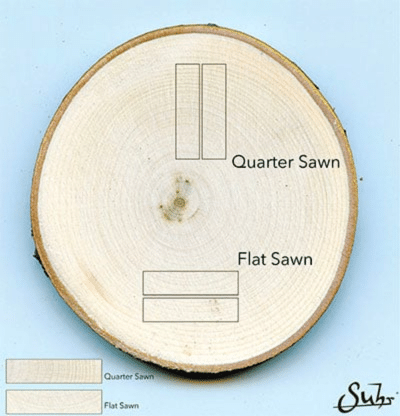

Quarter Sawn Necks
Quarter Sawn necks are cut at a 90-degree angle to the tree’s growth rings. This method has the following characteristics, although these are much debated among guitar builders.
- Stability: Offers increased stability and resistance to warping.
- Appearance: Displays a straight and uniform grain pattern.
- Tone: May enhance the guitar’s sustain and response.
- Usage: Often found in high-end and custom guitars.
Flat Sawn Necks
Flat Sawn, or plain sawn, necks are cut parallel to the growth rings. This method has the following characteristics, although these are much debated among guitar builders.
- Stability: Generally less stable than Quarter-Sawn, more prone to warping.
- Appearance: Features a more varied and visually interesting grain pattern.
- Tone: Can offer a unique tonal quality, though less consistent.
- Usage: More common in budget-friendly guitars.
Choosing Between Quarter Sawn And Flat Sawn
The choice between Quarter-Sawn and Flat Sawn necks depends on individual preferences, budget, and desired characteristics. Quarter Sawn may appeal to those seeking stability and a specific tonal quality, while Flat Sawn may attract those looking for unique aesthetics and affordability.
Most vintage electric guitars have flat-sawn necks due to the wood availability at the time. As I mentioned above, the differences between the two are highly debated, and some people believe the two are essentially the same!
The Impact Of Wood On Sound And Playability
The choice of wood for the guitar neck is not a mere cosmetic decision; it directly impacts the instrument’s sound and playability. Different woods resonate differently, affecting the guitar’s sustain, attack, and overall tonal character. The feel of the wood, its weight, and its response to the player’s touch all contribute to the playing experience.
Understanding the nuances of different guitar neck wood types enables players to make informed decisions when purchasing or customizing a guitar. Whether seeking a bright and punchy sound or a warm and resonant tone, the right wood can make all the difference.
The Rise Of Roasted Maple Necks
Roasted Maple, also known as “baked” or “torrefied” Maple, has been gaining popularity in the guitar world, and for good reason. Here’s what’s behind the rise of this innovative wood type.
What Is Roasted Maple?
Roasted Maple undergoes a special heating process that removes moisture and impurities. This treatment enhances the wood’s stability, making it more resistant to changes in humidity and temperature. The result is a neck that stays true to its shape and offers consistent performance.
Sound Characteristics
The roasting process not only affects the wood’s stability but also its tonal properties. Roasted Maple tends to have a slightly richer and warmer sound compared to regular Maple. This subtle shift in tone provides a unique sonic flavor that appeals to many players.
Aesthetic Appeal
Roasted Maple’s heating process gives the wood a beautiful golden-brown color. This distinctive appearance adds a touch of elegance and uniqueness to the instrument. It’s a visual feature that sets Roasted Maple necks apart from traditional options.
Where To Find Roasted Maple Necks
Many modern guitar manufacturers have embraced Roasted Maple, incorporating it into various models. Brands like Fender, Ibanez, Music Man, and others offer guitars with Roasted Maple necks. Whether in high-end custom builds or more affordable production models, Roasted Maple is becoming a sought-after option.
Comparison Of Guitar Neck Wood Types
| Wood Type | Used For (Neck/Fretboard) | Sound Characteristics | Durability | Price Range | Commonly Found In |
|---|---|---|---|---|---|
| Maple | Neck/Fretboard | Bright, Clear | High | $$ | Fender Strat |
| Roasted Maple | Neck | Enhanced Stability | High | $$$ | Ibanez Prestige AZ2402 |
| Rosewood | Fretboard | Warm, Rich | Medium | $$$ | Gibson Les Paul |
| Mahogany | Neck | Soft, Full | Medium | $$$ | PRS Custom 24 |
| Ebony | Fretboard | Crisp, Articulate | High | $$$$ | Taylor Acoustics |
| Pau Ferro | Fretboard | Smooth, Balanced | Medium | $$$ | Fender Jazzmaster |
| Walnut | Neck | Warm, Mellow | High | $$$ | Warwick Basses |
| Wenge | Neck/Fretboard | Rich, Complex | High | $$$$ | Custom Builds |
| Koa | Neck | Bright, Focused | Medium | $$$$ | Kiesel Guitars |
| Bubinga | Neck | Deep, Resonant | High | $$$$ | Ibanez Basses |
Pros and Cons of Guitar Neck Wood Types


| Wood Type | Pros | Cons |
|---|---|---|
| Maple | Bright tone, Durable, Widely available | Can be heavy, Sometimes lacks warmth |
| Roasted Maple | Enhanced stability, Resistant to humidity changes | Can be expensive, Limited availability |
| Rosewood | Rich, warm tone, Aesthetic appeal | Requires more maintenance, Can be expensive |
| Mahogany | Full, soft tone, Good sustain | Weight, Less brightness |
| Ebony | Crisp sound, Hard and dense, Smooth feel | Expensive, Sometimes considered less sustainable |
| Pau Ferro | Balanced tone, Good feel, Alternative to rosewood | Less traditional, Varying quality |
| Walnut | Warm, mellow tone, Strong and stable | Weight, Less common |
| Wenge | Rich, complex tone, Unique appearance | Can be rough to touch, Expensive |
| Koa | Bright, focused tone, Beautiful appearance | Expensive, Limited availability |
| Bubinga | Deep, resonant tone, Strong and stable | Heavy, Can be expensive |
Choosing The Right Guitar Neck Wood Types
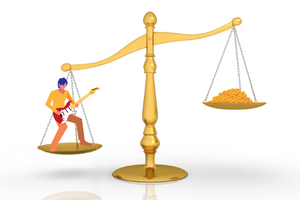
Identify Your Playing Style
Your playing style is a key factor in choosing the right wood for your guitar neck. Are you a Blues enthusiast who loves warm and soulful tones? Or perhaps a Rock player seeking bright and punchy sounds? Understanding your musical preferences will guide you toward the wood types that best complement your playing style.
Consider The Guitar’s Overall Construction
The neck wood is just one piece of the puzzle. Consider how it interacts with the body wood, pickups, and other components. A Mahogany neck paired with a Mahogany body may produce a very warm sound, while a Maple neck with an Alder body might offer a more balanced tone.
Think About Feel And Playability
Different woods have a distinct feel under the fingers. Some players prefer the smooth touch of Ebony, while others enjoy the natural texture of Rosewood. Consider what feels comfortable for you and how it affects your playing technique.
Evaluate Aesthetics And Appearance
While sound and playability are paramount, the visual appeal of the wood shouldn’t be overlooked. Whether you prefer the classic look of Maple or the exotic appearance of Wenge, choose a wood that resonates with your personal style.
Research And Try Different Options
Reading about wood types is informative, but nothing beats hands-on experience. Visit local guitar shops, try different instruments, and talk to experts. Playing guitars with various neck wood types will give you a tangible sense of what works best for you.
Consider Your Budget
From affordable options like Maple to more premium choices like Ebony, the price range for guitar neck woods can vary widely. Determine your budget and find a wood type that offers the best value for your investment.
Caring For Your Guitar Neck

Regular Cleaning
Keeping your guitar neck clean is vital for maintaining its appearance and playability. Use a soft, dry cloth to wipe down the neck after each playing session. Specialized guitar cleaning products can be used for deeper cleaning, but always follow the manufacturer’s instructions.
Humidity Control
Wood is sensitive to changes in humidity, and guitar necks are no exception. Extreme humidity levels can cause the wood to warp or crack.
Consider using a humidifier or dehumidifier in the room where you store your guitar, especially if it is a semi-hollow body electric, hollow body electric, or an acoustic guitar. Investing in a hard case with humidity control for added protection for the neck, fretboard, and body is a good idea.
Solid-body electrics are more resistant to humidity changes but are also susceptible to various climate changes to some degree.
Proper Storage
Store your guitar in a stable environment away from direct sunlight and heat sources. A quality guitar stand or wall hanger that supports the neck is ideal for daily storage, while a hard case is recommended for long-term storage or travel.
Regular Inspection
Regularly inspect your guitar neck for signs of wear, damage, or changes in alignment. Look for any unusual bending, twisting, or cracks. If you notice anything concerning, consult a professional guitar technician for assessment and repair.
Adjusting The Truss Rod
The truss rod is a metal rod inside the guitar neck that helps maintain its straightness. Adjusting the truss rod can correct issues with neck bowing, but it’s a delicate process that requires care and expertise. If you’re unfamiliar with truss rod adjustments, it’s best to seek professional assistance.
Avoid Abrasive Products
Avoid using abrasive cleaning products or tools that can scratch or damage the wood. Always use products specifically designed for guitar care, and test them on a small, inconspicuous area first.
Neck Finishes
Each of these finish types has its own aesthetic appeal and functional benefits, catering to different preferences and playing styles.
Nitrocellulose Lacquer
A traditional finish that’s known for its thin application and ability to age gracefully, allowing the wood to resonate freely. It’s often found on vintage and high-end guitars.
Polyurethane And Polyester Finishes
These finishes are more modern and provide a thicker, more durable coating that resists wear and tear. They are less prone to cracking but may slightly dampen the wood’s natural resonance.
Satin And Matte Finishes
These finishes offer a smooth and non-reflective appearance, providing a more natural feel under the fingers. They are popular among players who prefer a less glossy look and a more tactile connection with the wood.
Oil Finishes
Oil finishes are minimal and soak into the wood, preserving the natural feel of the neck. They offer less protection than other finishes but are favored by those seeking a close-to-wood playing experience.
Know Your Exotic Tonewoods!

Exotic tonewoods for the neck and fretboard have become a subject of interest for many guitar players. These unique woods, known for their distinct appearance and tonal characteristics, can add a special touch to an instrument. However, it’s essential to approach this topic with care and understanding.
First, don’t overlook the classic woods like Maple and Mahogany. These tried-and-true materials have proven their worth over time and may offer everything you need without venturing into the exotic realm and breaking the bank unnecessarily!
Budgeting is a key consideration. Exotic tonewoods can be costly, so explore various options and find a balance that suits both your musical desires and financial situation.
Next, it’s crucial to know the specific properties of the exotic tonewoods you are considering. Research their tone, durability, and appearance to ensure they align with your musical style and preferences.
Before pulling the trigger on a significant investment, try to play a guitar with the desired exotic tonewood neck. Feel the wood, listen to its sound, and ensure it resonates with you.
Lastly, remember that exotic tonewoods may require specialized care and maintenance. Proper handling will ensure that they continue to perform at their best.
Key Takeaways

Here are some of the most important things to remember about guitar neck woods.
- Your playing style, whether Blues, Rock, or Jazz, significantly influences the choice of neck wood, as different woods resonate with different musical genres.
– - Choosing a guitar neck is a personalized process that reflects individual preferences, playing techniques, and musical aspirations.
– - There’s no one-size-fits-all answer, so try different guitars in stores and consult with experts for tangible insights into what wood type feels and sounds best for you.
Are You Qualified To Make Guitar Adjustments Or Modifications?
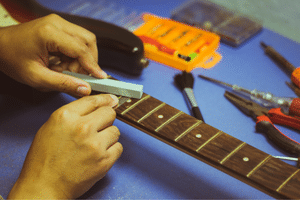
It’s great to work on your guitars, especially if you have a lot of them, but you should always be aware of your limitations.
Adjusting things like an electric guitar’s string height (action) or pickup height can be straightforward. Still, some adjustments require the proper training and experience, like adjusting a guitar’s truss rod.
When you doubt your ability to adjust, repair, or modify your guitar, it’s always best to bring it to a competent guitar technician or luthier (guitar designer & builder). You can permanently damage your guitar, and it might never play and sound right again!
Making modifications to your guitar can void its manufacturer’s warranty and cause permanent damage to the instrument. Certain modifications are irreversible, so you may be stuck with them, even if you desperately want to restore the guitar to its original condition!
I learned that the hard way over the years until I did a three-year apprenticeship in a guitar repair shop. Now I have my own home workshop with the proper training and equipment to safely maintain and repair all my instruments.
Remember: “When In Doubt, Send It Out!”
Frequently Asked Questions

Here are some of the questions I get asked about guitar necks.
If your question does not appear here, please put it in the comments, and I will get right back to you with an answer.
Why Do People Like Thick Guitar Necks?
Some players believe that the increased mass contributes to a richer tone, while others find the thicker profile more comfortable to grip, especially those with larger hands. The preference for thick necks can also be influenced by individual playing style and the specific genres of music a guitarist enjoys.
What Makes A Fast Guitar Neck?
Factors that contribute to a fast neck include a slim and flat profile, a well-finished and smooth fretboard (often with a gloss or satin finish), and a comfortable neck shape that fits the player’s hand.
Does The Fretboard Wood Affect Playability?
Absolutely! The fretboard wood can influence the feel and response of the guitar, affecting how it plays and resonates with your playing style.
Can I Use Household Cleaning Products On My Guitar Neck?
It’s best to avoid household cleaning products, as they may contain chemicals that can damage the wood. Use specialized guitar cleaning products or a soft, dry cloth.
How Often Should I Inspect My Guitar Neck?
Regular inspections, at least once a month, can help identify any issues early on, such as warping or cracks, ensuring the guitar remains in optimal condition.
Are There Sustainable Wood Options For Guitar Necks?
Many manufacturers are exploring sustainable wood options, using responsibly sourced or reclaimed wood. Check with specific brands for their eco-friendly offerings.
What’s The Lifespan Of A Guitar Neck?
With proper care and maintenance, a guitar neck can last for decades. Regular cleaning, inspections, and adjustments can prolong its lifespan.
What Are The Signs Of A Damaged Guitar Neck?
Signs of a damaged neck include visible cracks, twisting, excessive bowing, or difficulty in playing. An immediate professional assessment is recommended if damage is suspected.
Can I Change The Wood Type Of My Guitar Neck?
Yes, you can replace the guitar neck with a different wood type, but it’s a complex process that should be done by a professional luthier to ensure compatibility and proper alignment.
Is There A “Best” Wood For A Beginner’s Guitar Neck?
There’s no one-size-fits-all answer, as the “best” wood depends on personal preferences and playing style. Trying different options and consulting with experts can guide beginners to the right choice.
Final Thoughts

Choosing the right guitar neck is an essential part of crafting your unique sound and playing experience. Understanding the different guitar neck wood types is key to finding the perfect match for your style and preferences. Each wood type offers distinct tonal qualities and aesthetics, from traditional options like Maple and Mahogany to modern innovations like Roasted Maple.
The direction of the wood grain, whether quarter sawn or flat sawn, may play a role in stability and resonance. The finish of the neck, whether Nitrocellulose Lacquer, Polyurethane, Satin, or Oil, adds to the feel and appearance, catering to different tastes and playing needs.
Thick or thin, the profile of the neck can influence comfort, playability, and even the tone of the guitar. A thick neck may provide stability and a rich tone, while a slim, fast neck allows for quick transitions and effortless playing.
Caring for your guitar neck, from regular cleaning to proper humidity control, ensures its longevity and performance. Whether you’re a beginner seeking guidance or an advanced player exploring new territories, the choice of guitar neck wood types reflects your musical journey and personal connection to the instrument.
The world of guitar neck wood types is rich and diverse, offering something for every player. By exploring these options and understanding their impact on sound, playability, and aesthetics, you can find the perfect neck to make your guitar truly sing.

Here’s a great video from Fender that explains the types of woods they use for their necks and bodies and why it matters. Check it out!
What To Read Next ➡ Do Electric Guitars Sound Better With Age? A Musician’s Take
Related Article ➡ Sustain And Tone: How They Interact On An Electric Guitar
Tell Me What You Think

Please leave a comment below if you enjoyed this article, have any questions about guitar necks, or want to give your point of view. I will be happy to help you.
- What is your favorite wood for a guitar neck and fretboard? Why?
- Do you have a preference between quarter-sawn and flat-sawn necks?
- What do you think of roasted maple necks? Are they worth the extra cost?
- How much does the wood of a guitar neck change the tone compared to the body?
- What else is on your mind?

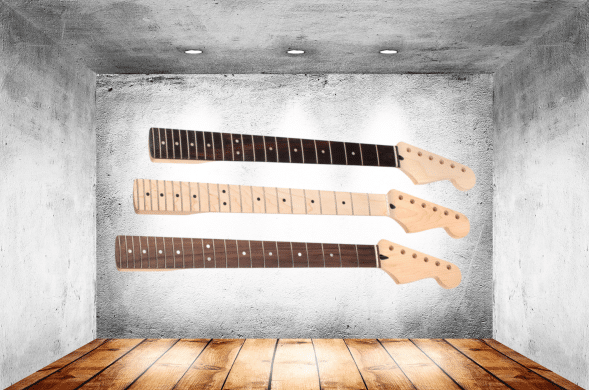

Hey Frank,
What an incredibly in-depth article on Guitar Neck wood types! Who knew?
You clearly know your trade, as it were, and you have taken the time to deliver a concise and highly informative post.
Even going into the different types of wood and how they affect the sound, acoustics, and playability.
As you say it’s not just about aesthetics for looks, the choice of wood plays so much of a vital role in the eventual sound of the music.
And then the section on caring for your guitar. Lots of very informative details are provided to ensure the longevity of your instrument. Very useful and detailed.
Thank you for taking the time to provide this in-depth post.
Cherie :o)
Hi, Cherie
Thank You for your comments!
The best way to shop for a new guitar with the sound you’re looking for is to play various instruments that use different tonewoods in the construction of the neck and body of the guitar.
Rock On! 🤘
Frank 🎸
What a fantastic guide! This comprehensive breakdown of guitar neck wood types is a treasure trove for players seeking to dive deeper into the intricate nuances of their instruments. From the rich warmth of mahogany to the bright resonance of maple, each wood type has its own unique personality that can profoundly influence the playing experience.
Hi, MDC
I appreciate your comments!
I hope this article helps you find the guitar with the sound and playability you are looking for. 😎
Rock On, 🤘
Frank 🎸